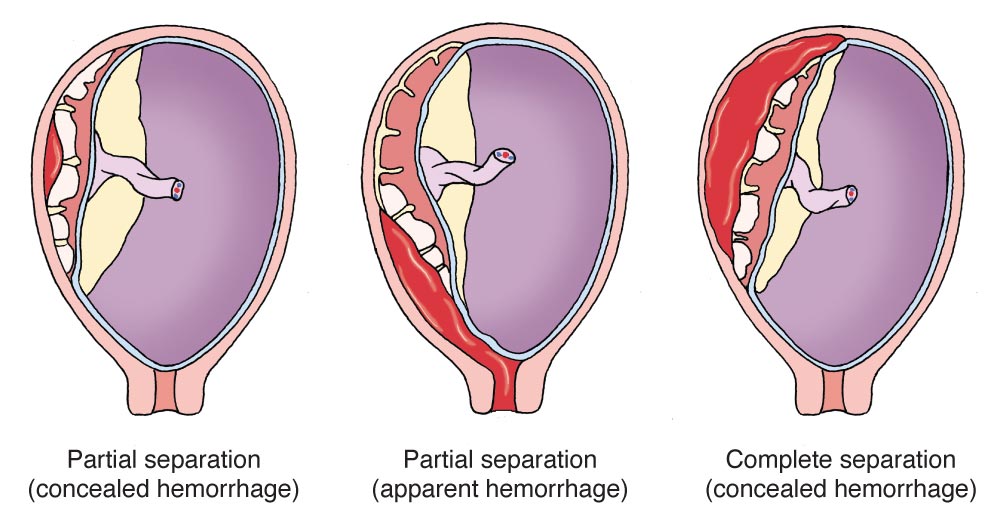Prolapsed Umbilical Cord
Umbilical cord slips below/wedges next to presenting part.
- May lead to fetal hypoxia due to cord compression
- Possible cause
- Rupture of membranes without engaged presenting part
- Noncephalic fetal presentation
- Symptoms
- Prolonged variable deceleration
- Pulsating cord palpated upon vaginal examination
- Visible cord at introitus
- Nursing actions
- Stay with patient and call for assistance
- Apply sterile glove and hold pressure of presenting part off umbilical cord
- Place patient in Trendelenburg position
- Notify physician
- Monitor fetal heart tones
- Place sterile saline gauze over any exposed cord
- Notify obstetrical team; prepare for cesarean birth
Shoulder Dystocia
Difficulty with the fetal shoulder passing under the maternal pubic arch.
- Dystocia simulation drills and protocols recommended
- Clinical findings
- Turtle sign
- Delay in delivery of shoulders after delivery of head
- Nursing interventions
- Assess bladder status; catheterize if necessary
- McRobert’s maneuver
- Suprapubic pressure
- Change in maternal position
- Hands-knees
- Squatting
- Lateral recumbent
- After delivery
- Careful assessment for postpartum hemorrhage
- Careful assessment for newborn injury
Vaginal Bleeding
Placenta Previa
Low-lying position of placenta in the uterus that partially or completely covers the cervical os.
Clinical Findings
- Painless, bright red vaginal bleeding
- Bleeding may be reported after intercourse
- Uterine tone soft upon palpation
- Medical intervention dependent on:
- Amount of bleeding
- Labor status
- Gestational age
- Fetal response
- If labor is active and os is completely covered, C/S indicated
- If bleeding is controlled and labor absent, conservative management
- Conservative management teaching
- Activity limitations
- No sexual intercourse or tampon use
- Monitor and report bleeding
- Patient instructed to report placenta placement when admitted to hospital
- Cesarean preparation class
- Count fetal movements
Abruptio Placentae
Premature separation of the placenta; may be partial or complete.
Clinical Findings
- Abdominal pain (sudden onset, intense and localized)
- Fundus firm, boardlike, with little relaxation
- Vaginal bleeding
- Bleeding may be concealed within the uterine cavity
- Alteration in FHR pattern

Nursing Care With Vaginal Bleeding in Late Pregnancy
- Monitor amount of bleeding
- Check vital signs
- Observe for signs of shock
- Evaluate fetal heart tones
- Palpate uterine tone
- Apply electronic fetal monitor (EFM)
- REPORT category II and III FHR patterns
- REPORT tachysystole
- Do not attempt vaginal examination until placenta placement verified
- Initiate IV fluids
- Report laboratory and ultrasound findings
- Prepare staff for possible cesarean birth
- Attend to patient’s emotional needs